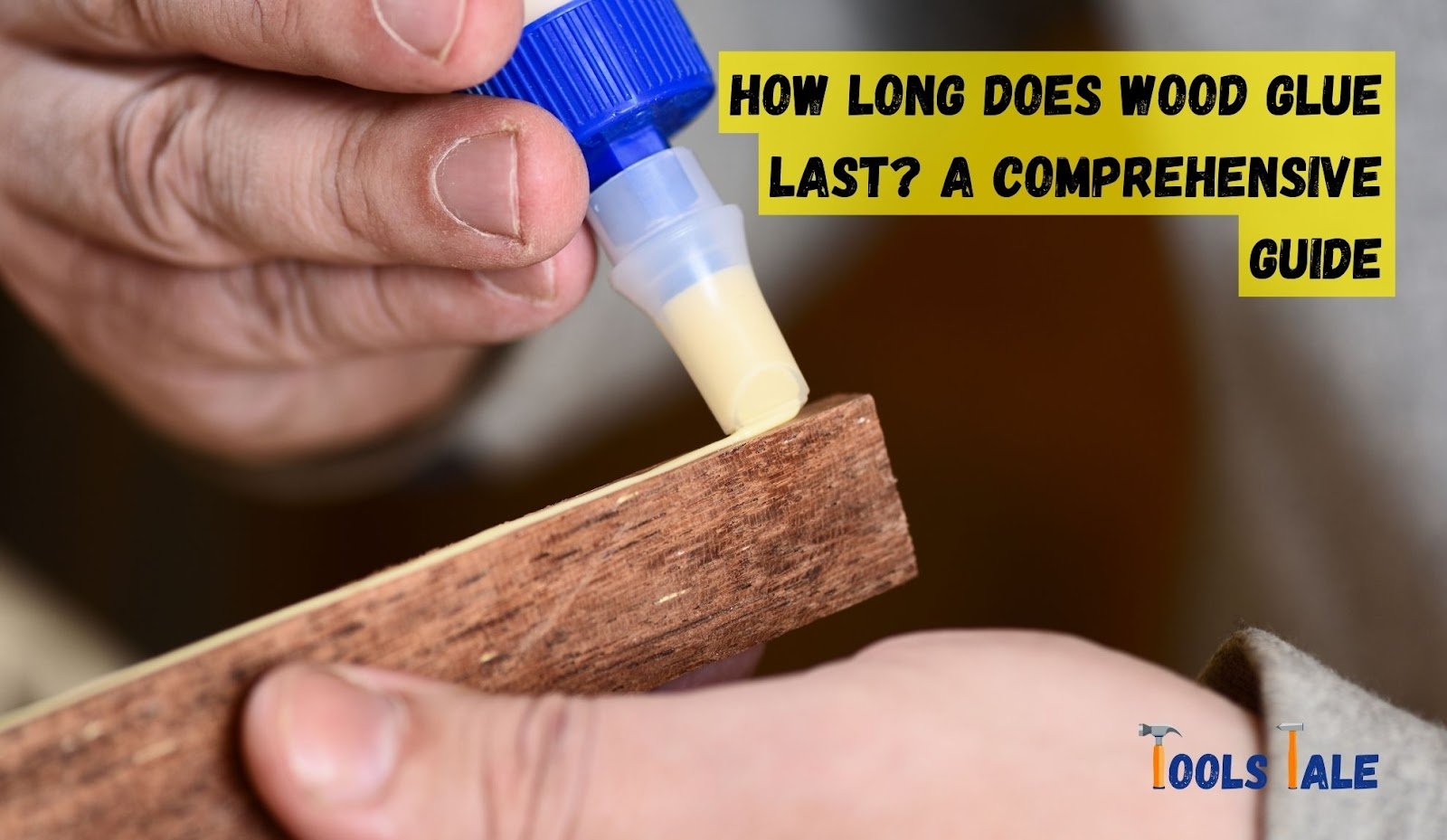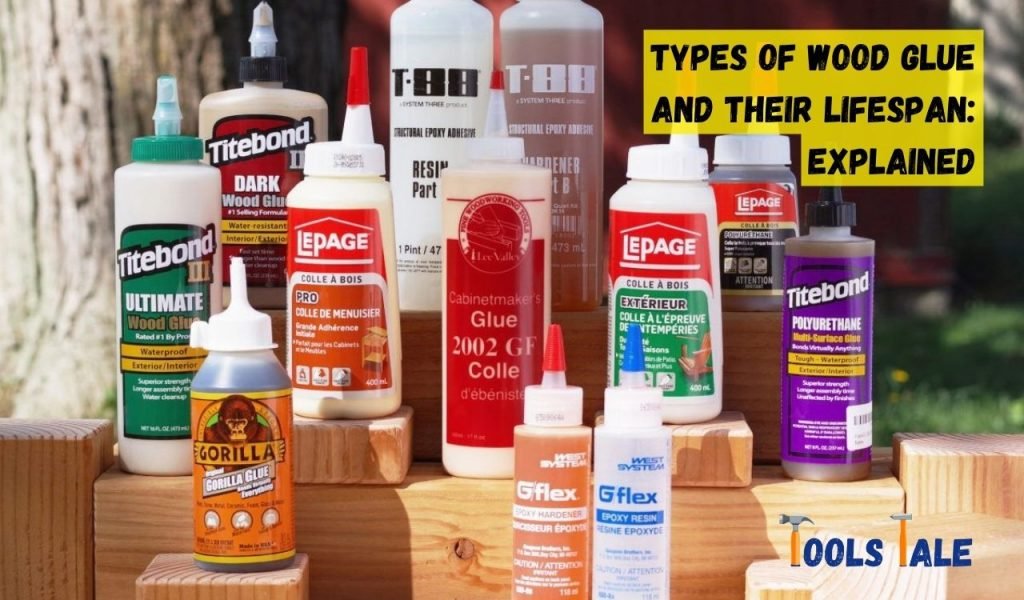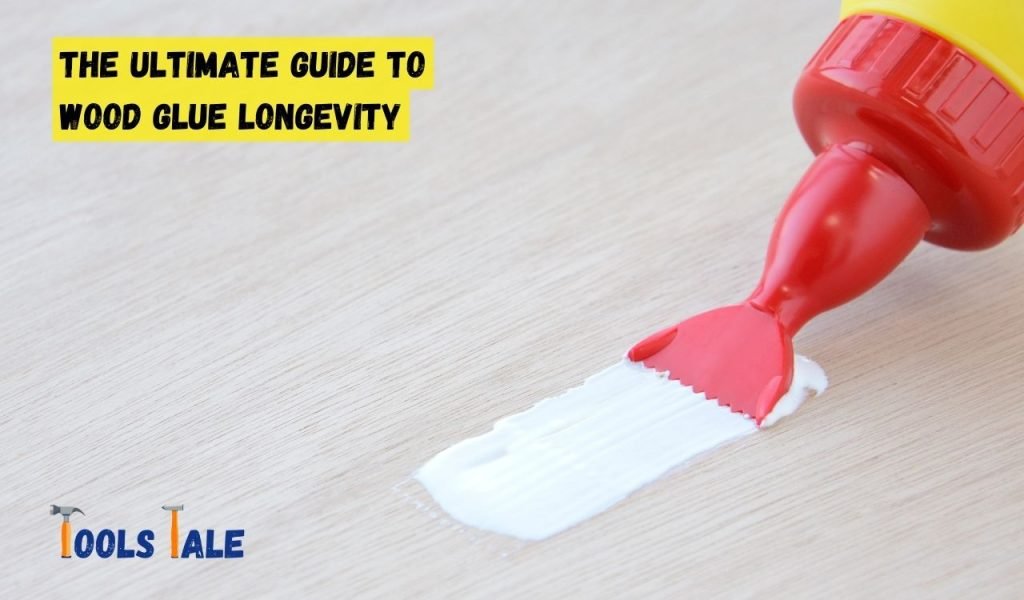Physical Address
304 North Cardinal St.
Dorchester Center, MA 02124
Physical Address
304 North Cardinal St.
Dorchester Center, MA 02124

How long does wood glue last? It’s a question that often lingers in the minds of woodworking enthusiasts like you. Well, worry not, because we’ve got the answers you’ve been seeking! In this short and snappy guide, we’ll unravel the mysteries surrounding wood glue longevity.
Whether you’re a seasoned pro or a DIY enthusiast, this quick read will equip you with the knowledge you need to ensure your woodworking projects stand the test of time. So, let’s dive in and discover the secrets to making your wood glue bond like a champ!
Key Summary: How Long Does Wood Glue Last?
Wood glue longevity varies by type and storage. Generally, unopened PVA wood glue keeps for 1-2 years; opened bottles, around 6-12 months. Polyurethane glue boasts a longer shelf life, extending up to 2 years. For optimal results, store the glue in a cool and dry environment.
Wood glue typically has a shelf life of one to two years when stored under proper conditions. The longevity of wood glue can vary based on factors such as the type of glue, storage conditions, age, and quality. It is essential to store wood glue in a cool, dry place, away from direct sunlight and extreme temperatures.
Exposure to high humidity or freezing temperatures can shorten its lifespan. To ensure the best results and maximum bonding strength, it is advisable to use fresh, high-quality wood glue that has not exceeded its recommended shelf life.
Regularly inspecting the glue for any signs of spoilage, such as changes in consistency, odor, or discoloration, can also help determine if it is still effective for use. By following these guidelines, woodworkers can make the most of their wood glue and achieve reliable and long-lasting bonds in their woodworking projects.

Wood glue is a vital component in woodworking, providing the essential adhesive power that holds projects together. There are several types of wood glue available, each with its unique properties and applications. Understanding the different types and their respective lifespans is crucial for achieving successful and long-lasting bonding in your woodworking projects.
Let’s delve into the world of wood glue types and explore the mysteries behind their lifespans:
Polyvinyl Acetate (PVA) wood glue, commonly known as white glue or carpenter’s glue, is one of the most widely used and versatile wood glues. It is water-based and dries to form a transparent bond. PVA glue is ideal for general woodworking projects and provides a strong bond with wood fibers. It is easy to use, non-toxic, and can be cleaned up with water. However, it is not suitable for outdoor use or areas exposed to moisture, as it is not water-resistant.
Lifespan: The typical shelf life of PVA wood glue ranges from one to two years when stored under suitable conditions. After this period, the glue may start to lose its adhesive properties, leading to weaker bonds. Proper storage in a cool, dry place with a tightly sealed container helps extend its lifespan.
Polyurethane wood glue is highly regarded for its exceptional water resistance and versatility. It is perfect for outdoor applications or projects exposed to varying weather conditions. Polyurethane glue undergoes a foaming reaction when exposed to moisture, which allows it to fill gaps and provide strong bonds even on irregular surfaces.
Lifespan: Similar to PVA glue, the shelf life of Polyurethane wood glue is typically one to two years when stored correctly. After this time, the glue’s effectiveness may start to diminish. As with all glues, proper storage and tightly sealed containers are essential for preserving its longevity.
Epoxy wood glue is renowned for its unmatched strength, durability, and bonding performance. Unlike PVA and Polyurethane glues, epoxy glue consists of two components – a resin and a hardener – which must be mixed before application. Epoxy glue forms incredibly strong bonds and is highly resistant to water, chemicals, and heat.
Lifespan: Epoxy wood glue generally has a longer shelf life compared to PVA and Polyurethane glues. It can last one to two years or even more if stored properly. Careful attention to storage conditions, such as avoiding extreme temperatures and tightly sealing containers, ensures optimal performance throughout its lifespan.
Hide glue, also known as animal glue, has been used for centuries in woodworking. It is made from collagen derived from animal tissues and is available in liquid or granule form. Hide glue provides excellent adhesion and is reversible, making it suitable for antique furniture restoration.
Lifespan: The shelf life of hide glue can vary depending on its form and storage conditions. Liquid hide glue may last up to two years, while granulated hide glue has a longer shelf life, potentially exceeding three years. Proper storage in airtight containers is crucial for preserving its effectiveness.
Cyanoacrylate (CA) glue, commonly known as super glue, is not specifically a wood glue, but it can be used for certain woodworking applications. It forms fast and strong bonds, making it ideal for small repairs and quick fixes.
Lifespan: The shelf life of CA glue can vary, but it generally ranges from six months to one year, depending on the brand and storage conditions. Keeping the container tightly sealed and in a cool, dry place helps prolong its usefulness.
The lifespan of wood glue can be influenced by various factors that impact its effectiveness and bonding performance. Understanding these factors is crucial for maximizing the shelf life of wood glue and ensuring reliable and long-lasting bonds in your woodworking projects. Let’s explore the key factors influencing wood glue lifespan:
By considering these factors and taking appropriate measures, woodworkers can extend the shelf life of their wood glue and maintain its adhesive performance.

Wood glue is a critical component in the world of woodworking, providing the adhesive strength needed to create durable and reliable bonds between wood pieces. However, to ensure successful projects and long-lasting results, understanding wood glue longevity is essential. In this ultimate guide, we will explore the factors that influence the lifespan of wood glue and offer valuable tips to maximize its effectiveness.
As a passionate woodworking enthusiast, you understand the importance of having dependable wood glue at your fingertips for all your creative projects. To ensure that your wood glue remains effective and ready to bond whenever you need it, mastering the secrets to extending its shelf life is crucial.
In this comprehensive guide, we unveil the tried-and-tested methods to prolong the life of your wood glue, so you can keep crafting your masterpieces without worry about adhesive performance.
In conclusion, understanding how long wood glue lasts is vital for every woodworking enthusiast. Different glue types have varying shelf lives, so proper storage and usage of fresh glue are essential for optimal bonding results. By following the tips and recommendations provided in this guide, you can ensure your woodworking projects stand the test of time.
Whether you’re a seasoned craftsman or a DIY enthusiast, the knowledge gained here will empower you to create masterpieces with confidence, knowing that your wood glue will deliver dependable results. So, embrace the secrets to wood glue longevity and let your creativity flow without worrying about adhesive performance.
Wood glue creates strong bonds that are typically considered permanent. It forms a durable connection between wood pieces, making it difficult to separate them without damaging the wood itself.
The longevity of wood glue depends on various factors such as the type of glue used, storage conditions, and the quality of the bond. Generally, well-applied wood glue can last for many years, maintaining its strength and integrity.
Yes, wood glue is designed to provide strong adhesion for woodworking projects. It forms a robust bond between wood surfaces, enhancing the structural integrity of the joint. Different types of wood glue offer varying levels of strength.
Not all wood glues are waterproof. Some wood glues are water-resistant, meaning they can withstand limited exposure to moisture without losing their bond strength. For projects exposed to water or outdoor elements, using a waterproof or weather-resistant wood glue is recommended.
Polyurethane-based wood glues are often considered among the longest-lasting options. They provide a strong bond that is resistant to moisture and temperature changes. Epoxy-based wood glues also offer excellent longevity and durability for various woodworking applications.